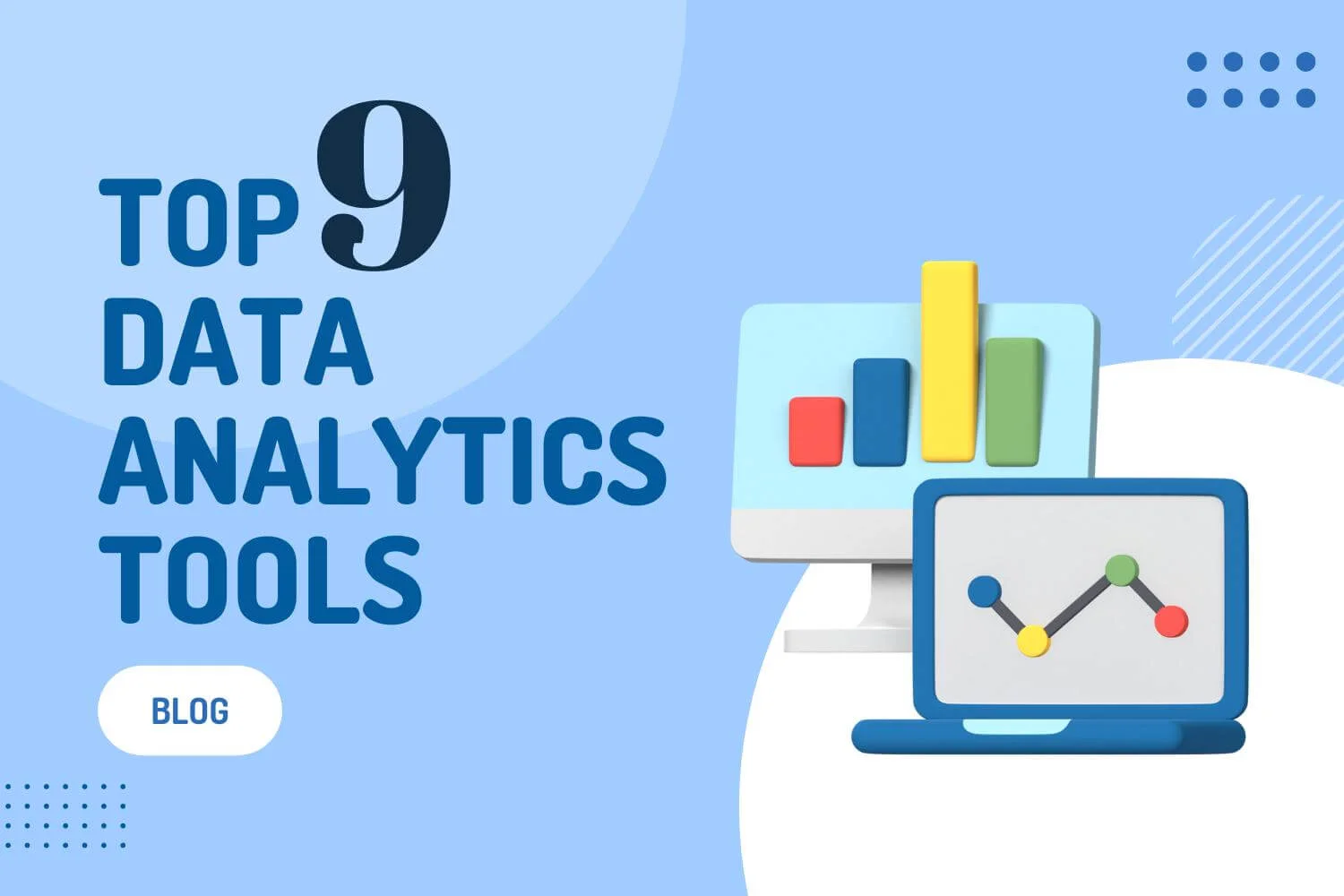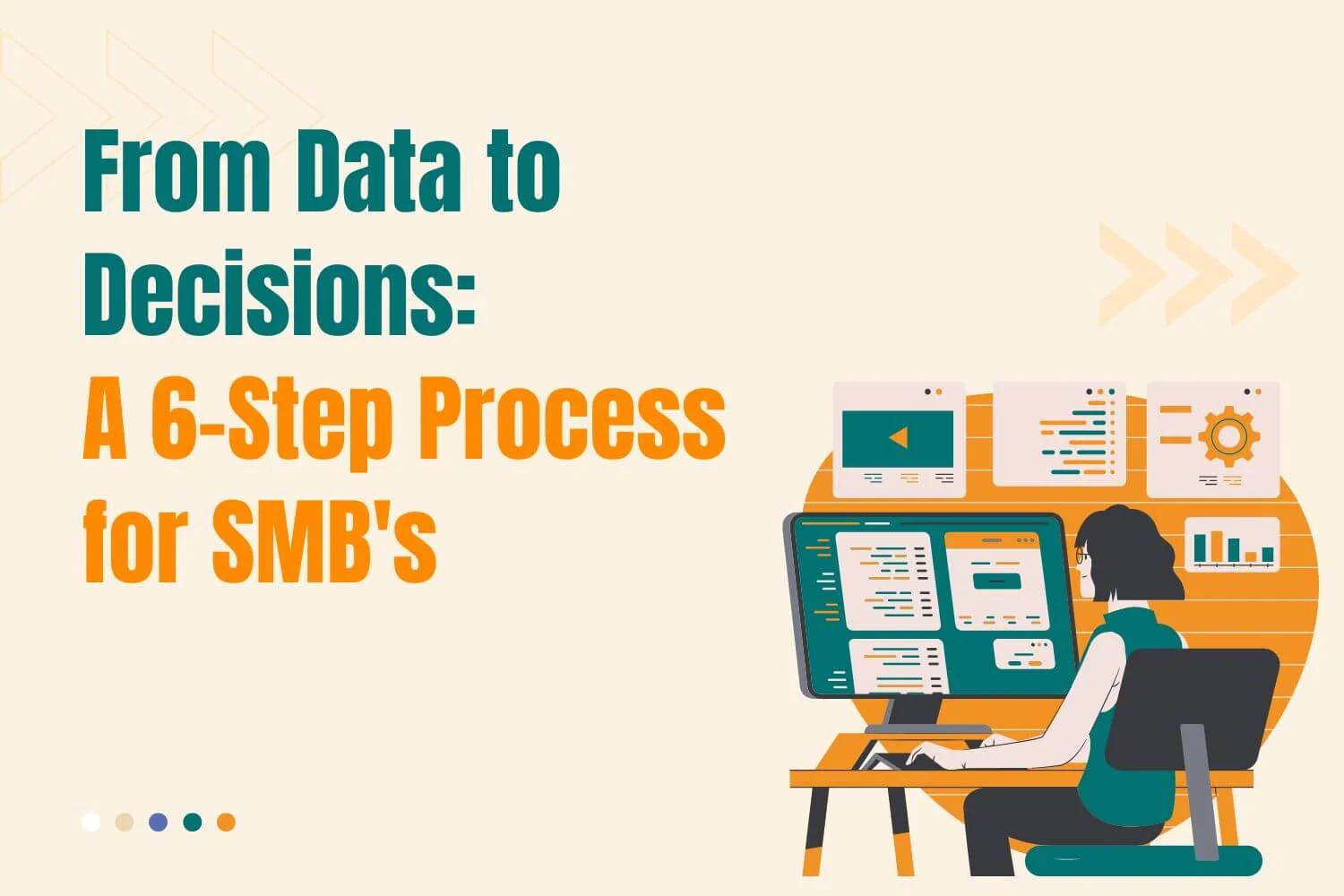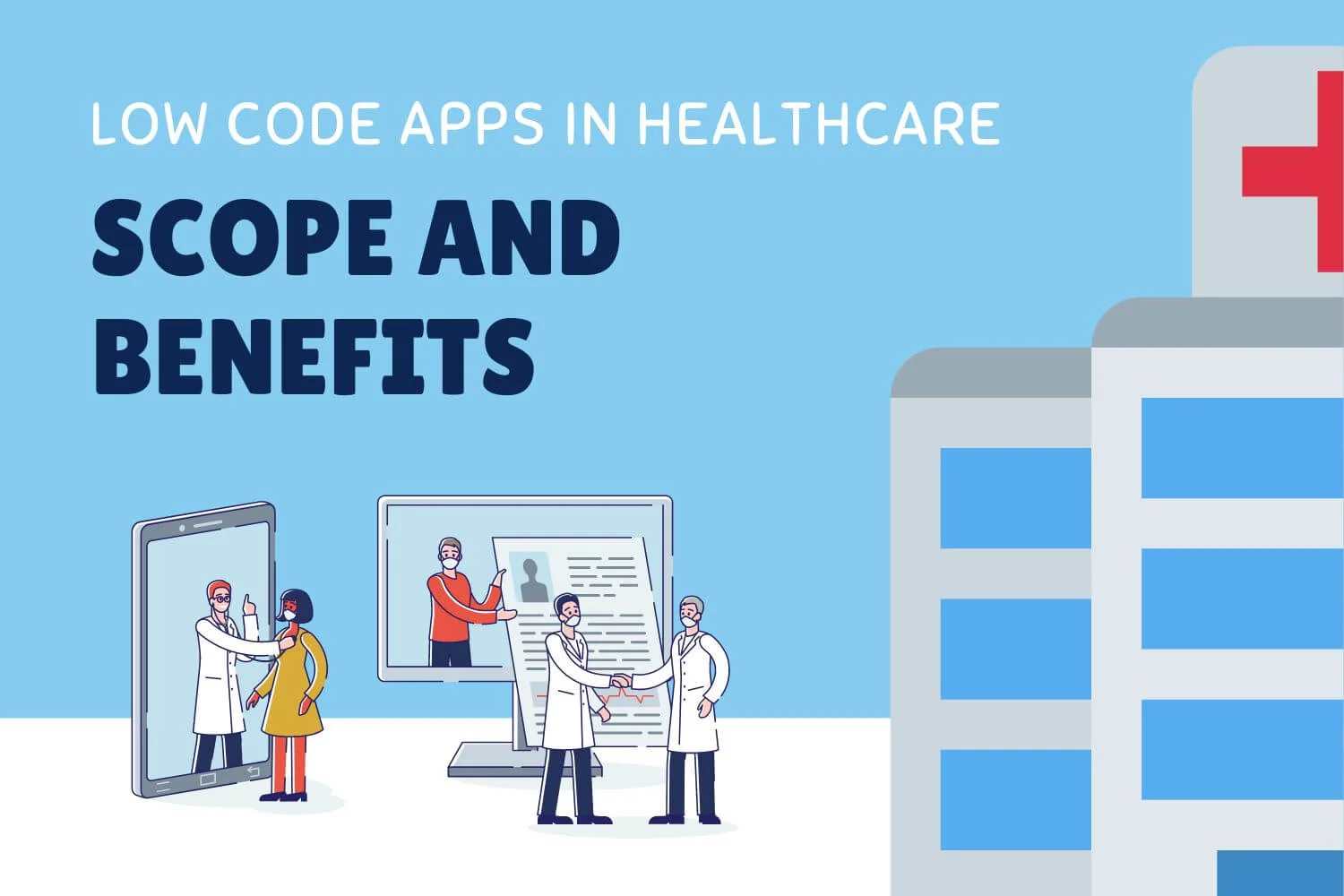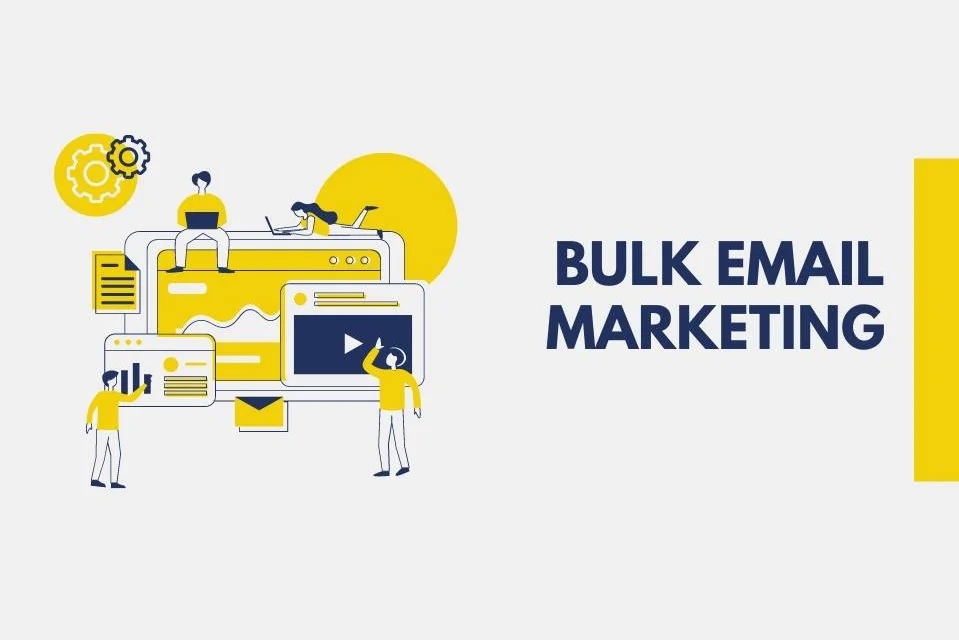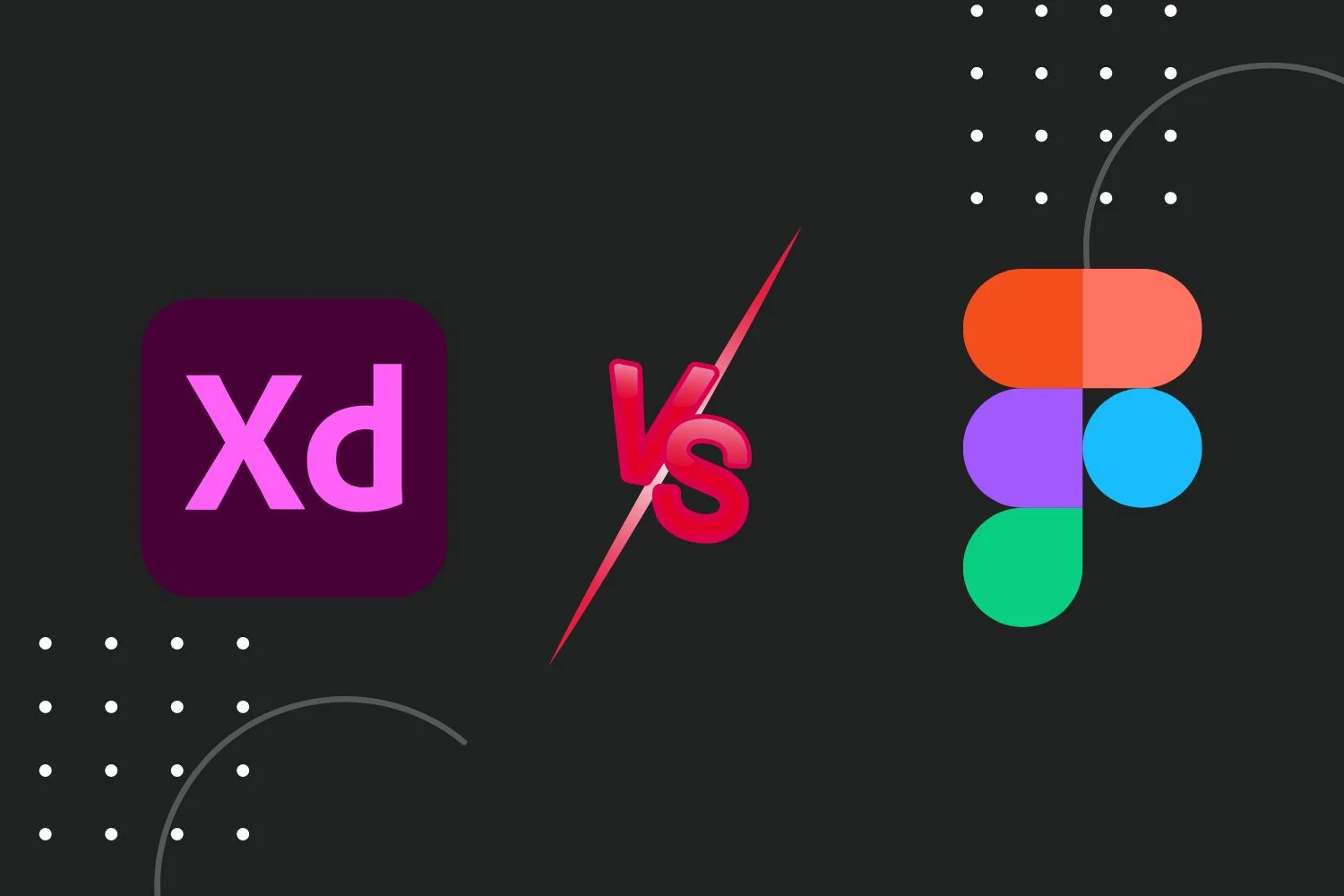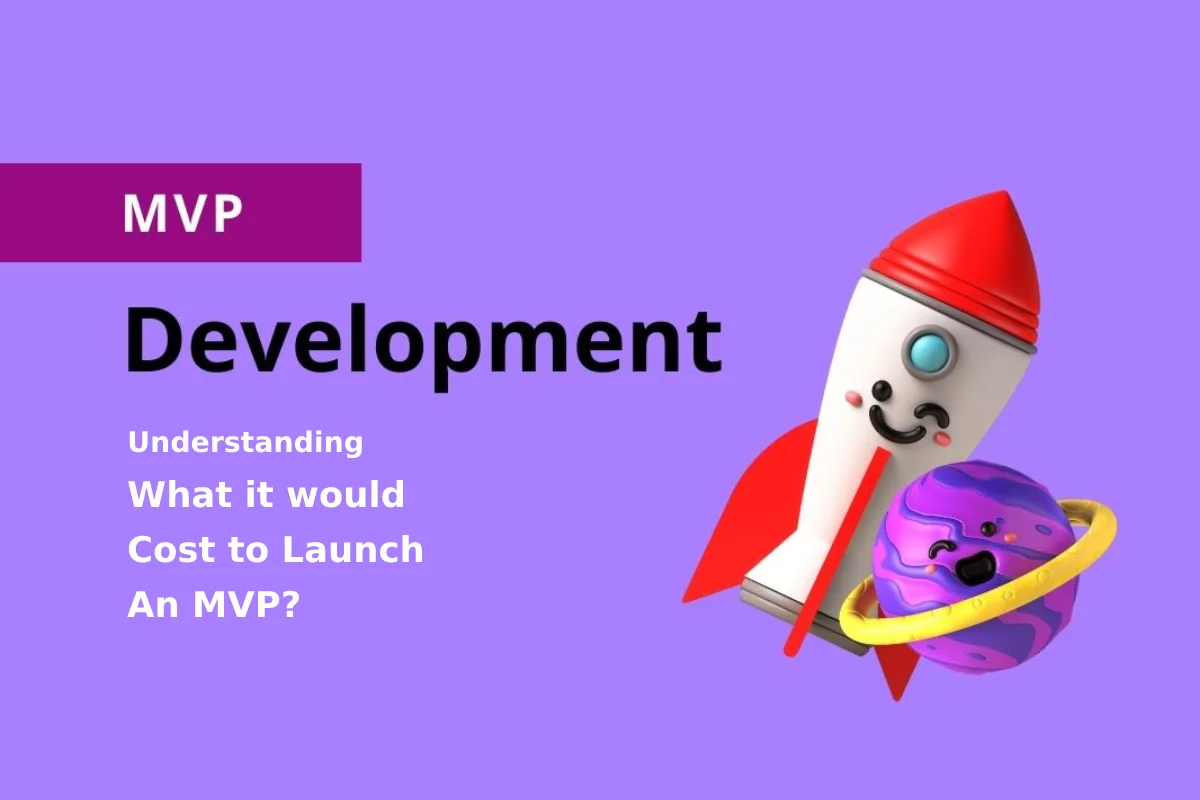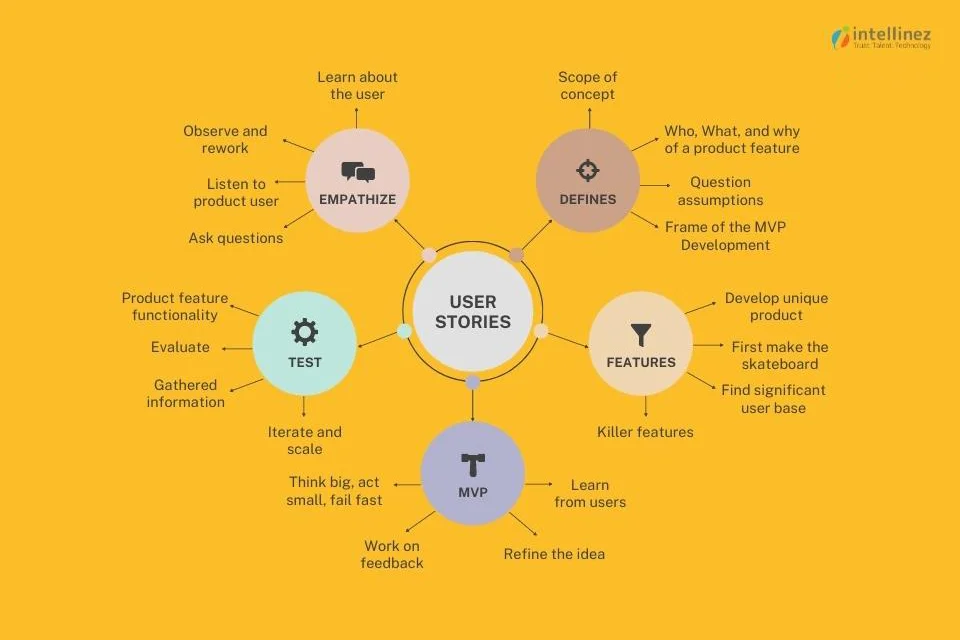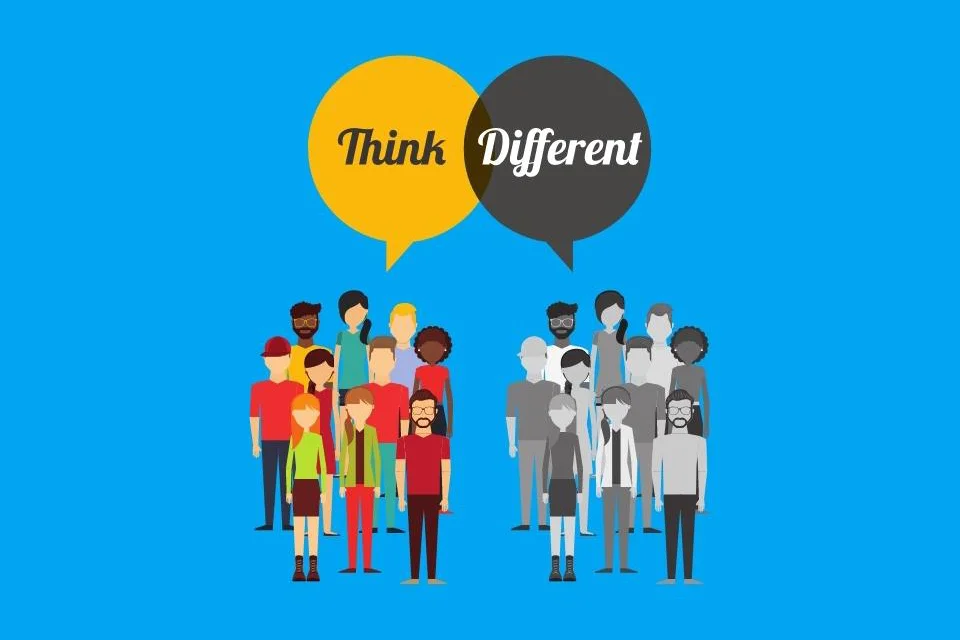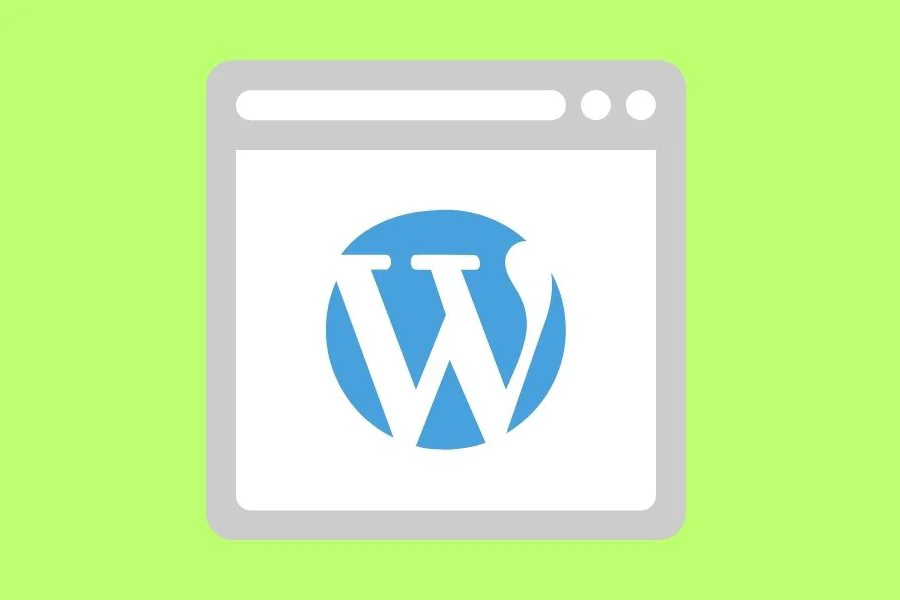Table of Contents
Any IT business can be either service-based or product-based or both. Service-based means that the organization’s primary income is generated through providing services, which could be product development, testing, marketing, AI-based product development, SEO, and so on. A product-based organization, on the contrary, has developed one or more products and sells them – with or without modifications – to clients and generates revenue with it.
Building an IT product is not easy in 2024. Even after investing so much effort, time, and money, there is no guarantee of success. The only thing that can be increased are the chances of success, and one way to do that is to ensure efficient product management. Product management is more than just ensuring the development of a project, it extends beyond product development and goes into market positioning and customer satisfaction. Product management serves as the bridge between the vision and the inception of a product.
One thing that can make or break product management is choosing product management tools and success. While the correct product management tools and techniques can ensure the development of a market-fit product, doing it wrong will send all the effort down the drain. In this blog, we will discuss the best product management tools and techniques that you can use to increase your chances of succeeding at product development.
Understanding the Role of Product Management
Product management is a critical function in any organization that builds products, whether physical or digital. It serves as the central hub where customer needs, business goals, and technical development converge, ensuring that the right products are built, delivered, and marketed effectively.
What is Product Management?
Product management is the process of overseeing a product’s lifecycle from initial concept to launch and beyond. It involves the strategic planning, development, and execution of products that meet market needs while aligning with the company’s business objectives. Yeah, that’s a tough thing to do, but it’s doable with the right approach, mindset, and of course, product management tools and techniques.
What Does a Product Manager Do?
A product manager (PM) acts as the product’s owner, responsible for its success (or failure). PMs are tasked with defining the product vision, creating a strategic roadmap, and coordinating the efforts of cross-functional teams such as engineering, marketing, and sales. While they may not always have direct authority over these teams, PMs ensure collaboration and communication flow smoothly across departments to keep the product on track.
Key Responsibilities of Product Managers

- Cross-Functional Team Coordination – Collaborating with design, engineering, marketing, and customer support teams to ensure product success.
- Feature Prioritization – Deciding which features to develop based on effort, value, and alignment with the product’s goals.
- Market Research – Conducting competitive analysis and understanding customer needs to inform product development.
- Product Launch and Post-Launch Management – Overseeing product launches, tracking performance, and continuously iterating on the product based on feedback.
- Roadmap Planning – Defining the product’s long-term vision and aligning it with business goals and customer expectations.
Challenges Faced by Product Managers
Product management is a rewarding role, but it comes with several challenges that demand strong leadership and problem-solving skills.

1. Balancing Stakeholder Expectations
Product managers often juggle the needs and opinions of various stakeholders – customers, internal teams, executives, and investors. Balancing these expectations while staying true to the product’s vision can be difficult, especially when different parties have conflicting priorities.
2. Ensuring Timely Product Launches
Meeting deadlines is crucial, but product timelines can easily slip due to unforeseen issues, such as technical hurdles or changing market demands. PMs must constantly balance the desire for perfection with the need to launch on time and within budget.
3. Keeping Teams Aligned
Product managers work with multiple teams, each with their own perspectives and goals. Keeping everyone aligned with the product vision and ensuring smooth communication can be challenging, especially in larger organizations where departments may be siloed.
4. Managing Scope Creep
As a product develops, new ideas and feature requests can emerge, often leading to scope creep. PMs must manage these requests while keeping the product focused on its core objectives, ensuring that development efforts don’t stray from the original plan.
By understanding the responsibilities and challenges of product management, it becomes clear that product managers play a vital role in the success of a product. They are the linchpins that ensure the product aligns with customer needs, business objectives, and technical feasibility, all while navigating complex, ever-changing environments.
Key Tools Every Product Manager Needs
The role of a product manager involves juggling multiple responsibilities, from defining product strategies to managing teams and stakeholders. To efficiently handle these tasks, product managers rely on a suite of tools designed to streamline processes, enhance communication, and provide valuable data. Below are 4 essential categories of product management tools every product manager should have in their toolkit:

1. Collaboration Tools
Collaboration tools foster seamless communication between cross-functional teams, which is crucial for product managers who work closely with engineering, marketing, and customer support teams. These product management tools streamline communication, task management, and workflow organization, ensuring that everyone stays on the same page throughout the product development cycle.
Key Benefits of Collaboration Tools
- Improved Communication – Real-time messaging and file sharing help teams collaborate effectively.
- Increased Productivity – Streamlined communication reduces the need for lengthy email chains and meetings.
- Task Management – Track individual and team tasks, deadlines, and dependencies.
Best Collaboration Tools
1. Asana
Asana is a widely used project management tool that offers robust features tailored for product managers. It helps teams organize, track, and manage product development workflows, from sprint planning to task assignment. It’s intuitive interface and over 300 integrations with other tools (like Google Drive, Jira, and Slack) streamline collaboration across teams. With customizable task boards, timelines, and workload management, product managers can easily prioritize tasks, track progress, and ensure timely delivery. Asana’s flexible pricing plans and multilingual support make it a versatile solution for product teams of any size, enabling them to stay aligned on goals and execution.
Microsoft Teams is a comprehensive team collaboration platform that integrates seamlessly with the Microsoft 365 suite, making it ideal for product managers working in enterprise environments. Teams provides a centralized workspace for chat, file sharing, and video conferencing, enabling smooth communication across cross-functional teams. With native integration of Microsoft apps like SharePoint, OneDrive, and Outlook, as well as support for third-party apps, Microsoft Teams allows product managers to manage product roadmaps, share documents, and host team meetings effortlessly. Available in various plans, Teams can be tailored to fit different project management needs, from small teams to large-scale product development efforts.
3. Slack
Slack is a leading communication and collaboration platform designed to streamline team interactions, making it a favorite among product managers for coordinating with cross-functional teams. Its flexible “channels” system allows product managers to organize discussions around specific products, features, or projects. Slack’s extensive integrations with tools like Jira, Trello, and GitHub help product managers keep all project information and workflows in one place. Available on mobile, web, and desktop, Slack offers a freemium model, making it accessible to teams of all sizes, and supports 12 languages to cater to global teams. Its real-time messaging and app integrations simplify communication and help product managers stay on top of project updates and tasks.
2. Data Analytics Tools
Data analytics tools enable product managers to gain deep insights into how users interact with their product. By tracking user behavior, engagement metrics, and feature usage, these tools provide valuable data that informs decision-making. Product managers can use these insights to optimize features, identify pain points, and validate product hypotheses, ensuring that development efforts are aligned with customer needs.
Key Benefits of Data Analytics Tools
- Informed Decisions – Data-driven insights lead to better product decisions.
- Performance Measurement – Track KPIs to assess product success.
- User Behavior Tracking – Understand how customers use the product and which features drive engagement.
Best Data Analytics Tools
1. Amplitude
Amplitude is an advanced analytics platform tailored for product managers to gain deep insights into user behavior and product performance. It excels at tracking user journeys, cohort analysis, and engagement trends, allowing product managers to understand how different segments of users interact with their product over time. With its focus on product optimization, Amplitude helps product managers identify high-impact features, prioritize product improvements, and align development efforts with customer needs, ultimately leading to better retention and increased user satisfaction.
Google Analytics is a powerful and free analytics tool that provides product managers with deep insights into website traffic and user behavior. It allows product managers to track key metrics such as user acquisition, engagement, and conversion rates, helping them understand how users interact with specific features or content on the website. Unlike other product management tools on our list, Google Analytics is completely free, making it an accessible option for product managers at any stage. By simply singing in with a Google account linked to the website, product managers can access comprehensive data, segment users, and make informed decisions to optimize the user experience and drive business outcomes.
3. Mixpanel
Mixpanel is a robust product analytics tool designed to help product managers track and analyze user interactions with their product, whether it’s a website, mobile app, or software platform. By focusing on event-based tracking, Mixpanel allows product managers to monitor how users engage with specific features and workflows in real time. This tool is essential for understanding key metrics like user retention, conversion rates, and funnel progression. With these insights, product managers can make data-driven decisions to enhance product features, improve user experience, and drive business outcomes.
Check out innovative data analytics tools and techniques.
3. Feedback Collection Tools
Feedback collection tools allow product managers to gather direct insights from customers about their experiences with the product. Whether through surveys, usability tests, or customer interviews, these tools provide qualitative data that helps product managers refine features, prioritize improvements, and identify unmet customer needs.
Key Benefits of Feedback Collection Tools
- Continuous Improvement – Regular feedback ensures that the product evolves based on real user needs.
- Customer-Centric Improvements – Direct customer feedback helps prioritize features that matter the most.
- Usability Testing – Identify pain points in the user experience to enhance product design.
Best Feedback Collection Tools
1. SurveyMonkey
SurveyMonkey is a versatile survey tool that allows product managers to gather invaluable customer feedback through customizable surveys. With an easy-to-use interface and a wide range of question formats, SurveyMonkey empowers product teams to collect quantitative and qualitative data from users. Product managers can use this feedback to assess customer satisfaction, validate new ideas, and prioritize feature development based on real user input. It’s a valuable tool for continuous product improvement and aligning features with customer needs.
2. Typeform
Typeform is an interactive survey and form tool designed to create engaging, user-friendly surveys. Its conversational approach makes it ideal for gathering user feedback with a more personalized touch. Product managers can use Typeform to collect insights on user experience, product features, and customer preferences in a way that encourages higher completion rates. Typeform’s sleek, customizable design helps product managers create surveys that feel natural, leading to more thoughtful and valuable responses.
3. UserTesting
UserTesting is a feedback collection platform that specializes in usability testing and user experience insights. Product managers can use UserTesting to observe real users interacting with their product in real-time, uncovering pain points, usability issues, and feature improvement opportunities. By gathering qualitative feedback through video recordings and written responses, product managers gain a deep understanding of user behavior, which helps them optimize product design and ensure it meets customer expectations.
4. Roadmapping Tools
Roadmapping tools help product managers map out the strategic direction of their products. These tools enable teams to visualize the product’s development timeline, track progress, and prioritize features or initiatives based on business goals. By providing a clear, high-level overview of the product’s journey, roadmapping tools also make it easier for product managers to communicate plans with stakeholders, ensuring alignment across teams.
Key Benefits of Roadmapping Tools
- Prioritization – Facilitates the prioritization of features based on customer needs and business impact.
- Stakeholder Alignment – Helps communicate the product vision and timelines to key stakeholders.
- Strategic Clarity – Keeps the team focused on long-term goals and milestones.
Best Roadmapping Tools
1. Aha!
Aha! is a comprehensive roadmapping tool designed to help product managers define product strategy, set goals, and visualize the entire product development process. It allows product managers to create detailed roadmaps, prioritize features, and manage timelines while aligning with business objectives. With its built-in collaboration features, Aha! Enables teams to share progress, track dependencies, and keep stakeholders informed, making it easier to execute a product vision effectively.
2. ProductPlan
ProductPlan is a user-friendly roadmapping tool that helps product managers create and share visual product roadmaps. It’s designed to simplify the process of planning, communicating, and aligning product development efforts. ProductPlan allows product development teams to prioritize features, manage releases, and communicate product strategy with stakeholders in a clear, visual format. Its drag-and-drop functionality and integration with other project management tools make it ideal for keeping teams on the same page throughout the product lifecycle.
Formerly known as Roadmunk, Strategic Roadmaps is a tool focused on high-level product strategy, allowing product managers to align long-term goals with actionable steps. It helps teams visualize the product’s future direction, link strategic initiatives to product features, and track progress against company objectives. By providing a clear overview of key milestones and dependencies, Strategic Roadmaps ensures that product teams and stakeholders remain aligned, enabling better decision-making and more effective prioritization of resources over time.
By leveraging these essential product management tools, product managers can drive more efficient processes, make informed decisions, and ultimately build products that meet and exceed customer needs and business goals.
Effective Techniques in Product Management
Product management techniques are essential for:
- Guiding product teams,
- Aligning stakeholders, and
- Ensuring successful product launches.
By adopting the right frameworks and methodologies, product managers can enhance collaboration, prioritize effectively, and deliver high-quality products that meet – and even exceed – market demands. There are several product management techniques that a product development team can choose from. Let’s explore 3 of the most popular product management techniques that you can use right away, if not done already:

1. Agile Methodology
Agile methodology is an iterative approach to product development that focuses on delivering work in smaller, manageable increments called “sprints.” Instead of defining all requirements upfront, agile enables continuous feedback and adaptation throughout the product lifecycle. Product teams work in short cycles, allowing them to respond to changing customer needs and market conditions in real time.
Key Benefits of Agile Methodology
- Customer-Centric – Regular feedback loops ensure that the product remains aligned with customer expectations and business goals.
- Faster Iterations – Deliver incremental updates more frequently, improving time-to-market.
- Flexibility – Easily adapt to changes in the market or customer requirements.
Why It Works?
Agile promotes flexibility by encouraging frequent testing, customer feedback, and collaboration across teams. This iterative process allows product managers to make course corrections quickly and respond to new information, reducing the risk of developing features that don’t meet customer needs.
2. Lean Product Management
Lean product management focuses on maximizing value while minimizing waste. Rooted in the Principles of Lean Manufacturing, this approach encourages product teams to identify and eliminate non-essential activities, ensuring resources are directed toward creating customer value. This product management technique emphasizes a build-measure-learn cycle, where product managers develop minimal viable products (MVPs) and gather feedback to iterate and refine the product.
Key Benefits of Lean Product Management
- Cost Efficiency – Minimizing unnecessary tasks and focusing on high-value features reduces development costs.
- Continuous Improvement – Ongoing feedback drives incremental improvements, enhancing product quality over time.
- Quicker Time-to-Market – Rapid experimentation allows for faster delivery of a working product.
Why It Works?
The Lean approach streamlines the product development process by eliminating wasteful practices and focusing on rapid experimentation. By releasing MVPs, product managers can validate ideas early, minimizing the risk of spending time and resources on features or products that don’t resonate with customers.
3. Prioritization Frameworks
In product management, prioritization is critical to ensure resources are focused on developing features that provide the most value to customers and the business. These frameworks offer structured ways for product managers to evaluate and rank features based on factors like business goals, customer demand, and development effort.
Popular Options
- Kano Model – Focuses on categorizing product features based on customer satisfaction, from basic needs to performance enhancers.
- MoSCoW – Helps teams categorize features into Must-haves, Should-haves, Could-haves, and Won’t-haves.
- RICE – Prioritizes features based on Reach, Impact, Confidence, and Effort.
Key Benefits of Prioritization Frameworks
- Customer-Focused – Prioritization frameworks ensure that features are aligned with what customers truly need or desire.
- Efficient Resource Allocation – Ensures that teams invest time and effort in the highest-impact features first.
- Focused Decision-Making – Helps product teams make informed decisions by weighing the impact, effort, and customer satisfaction of each feature.
By leveraging these techniques – Agile, Lean, and prioritization frameworks – product managers can streamline their workflows, adapt quickly to change, and deliver products that meet customer and business expectations more efficiently.
Pairing Product Management Tools and Techniques for Success
Effective product management requires more than just using the right tools or following a particular product management methodology. To truly succeed, product managers must integrate these tools with proven techniques to create a seamless, efficient workflow. By combining the strengths of different tools and methodologies, product teams can optimize performance, adapt to changes quickly, and ensure that product development is aligned with both customer needs and business goals.
Integration is Key
Product management tools and techniques work best when integrated to support each phase of product development. A cohesive workflow ensures that tools complement techniques, leading to better collaboration, informed decision-making, and more efficient execution.
Example
Consider pairing roadmapping tools like Aha! or ProductPlan with the Agile methodology. While Agile focuses on short, iterative sprints, roadmapping tools provide the strategic overview that keeps the product aligned with long-term goals. By combining these, product managers can break down the roadmap into actionable sprints, prioritize features based on customer feedback, and quickly adapt if the market or customer needs change. This integrated approach ensures that the team is both flexible and focused on delivering the right features at the right time.
Why It Works?
- Improved Communication – Tools like Asana and Slack facilitate real-time communication and task management, ensuring that all team members are on the same page during each sprint.
- Data-Driven Decisions – Analytics tools such as Mixpanel can be used alongside Agile techniques to track the performance of newly released features, allowing teams to quickly iterate based on user engagement.
Customization Based on Product Type
Different industries and products often require customized sets of tools and techniques. A startup developing a tech product may prioritize flexibility and speed, while a large enterprise working on a mature product may focus more on stakeholder alignment and risk management. Choosing the right combination of product management tools and techniques based on the specific product type is crucial for success.
Example 1: Tech Startups
Tech startups thrive in fast-paced environments and often adopt Lean product management principles. By using MVP development and feedback collection tools like UserTesting, startups can release a basic version of their product quickly, gather real-world feedback, and iterate rapidly. Pairing this with data analytics tools such as Google Analytics helps validate assumptions and refine the product with each iteration.
Key Benefits
- Cost Efficiency – By focusing on high-impact features and gathering early user feedback, startups can avoid wasting resources on unnecessary features.
- Faster Time-to-Market – Lean principles, combined with tools like Roadmunk for quick roadmap adjustments, allow startups to respond swiftly to market changes.
Example 2: Large Enterprises
In contrast, large enterprises often manage more complex products and require robust planning and collaboration. Roadmapping tools like Aha! help them maintain a clear strategic vision, while prioritization frameworks such as MoSCoW assist in balancing numerous demands of stakeholders. Pairing these tools with collaboration platforms like Microsoft Teams ensures that large, cross-functional teams stay aligned, even when working across different departments and geographies.
Key Benefits
- Efficient Resource Management – With many teams involved, using collaboration and task management tools is critical to keeping efforts coordinated and preventing duplication of work.
- Stakeholder Alignment – Enterprises benefit from clear roadmaps and prioritization frameworks, which ensure all departments understand the product’s strategic direction.
By integrating the right tools with effective techniques and customizing them to fit the product’s needs, product managers can create a powerful workflow that enhances both team efficiency and product outcomes. Whether it’s a tech startup striving for agility or a large enterprise managing complexity, the right combination of tools and techniques can significantly impact product success.
Conclusion
Choosing the best product management tools and techniques is very important. Choosing the product management tools and techniques can make or break your product success. The best options depend on the situation. Hopefully, the product management tools and techniques that we have provided here will be relevant for you.
To ensure that you are using the best options available, continuously evaluate your toolkit and adopt and drop relevant product management tools and techniques to optimize your product management process and ensure success. To stay competitive and relevant in the market, you need to evolve with the evolution of product management tools and techniques.
We Have All the Product Management Expertise Your Need
Intellinez Systems is well-versed into the nuances and technicalities of product management. Our product managers ensure you develop a market-fit product with an ideal GTM strategy. Connect today for a free 30-minute consultation.
FAQs
-
What is product management?
Product management corresponds to the business process of planning, developing, testing, releasing, and managing an IT product. It includes everything from ideation of a product to developing and implementing its GTM strategy.
-
What are some popular product management tools?
Aha!, Amplitude, Asana, Google Analytics, Microsoft Teams, Mixpanel, ProductPlan, Roadmunk, Slack, SurveyMonkey, Typeform, and UserTesting are some of the best product management tools.
-
How to develop a product?
Product development starts with idea generation followed by market research. Based on the same, development starts and then testing begins. Finally, the product is deployed, and it enters the maintenance phase.
-
What are some popular product management techniques?
Agile methodology, Lean product management, and Prioritization Frameworks like Kano Model, MoSCoW, and RICE are some of the popular product management techniques.
-
What are the 7 stages of product management?
Idea sourcing, idea screening, market research & user research, strategy development, product creation, testing & feedback gathering, and constant product improvement.





































![A Comprehensive Guide to AWS SaaS Architecture [Diagram Included] 85 Aws SaaS Architecture](http://www.intellinez.com/wp-content/uploads/2024/08/Title-image.jpg)

















































